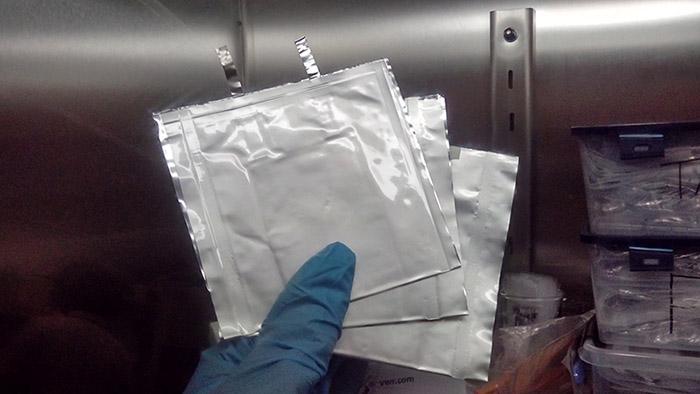Breathing new life into used batteries
Positive electrodes of a lithium-ion battery can be recycled without crushing, melting and separating the materials, reveals Tanja Kallio, Associate Professor at Aalto University, Finland.

‘Instead, the active material (lithium-cobalt-oxide (LiCoO₂)) can be re-lithiated electrochemically using metallic lithium as a counter electrode,’ she says.
The discovery could help tackle the rising demand for rechargeable batteries from the proliferation of electric cars, smartphones and portable devices.
Kallio’s aim is to minimise the steps needed to recycle positive electrode materials compared to the current hydrometallurgy and pyrometallurgy processes.
‘Currently, batteries are recycled mostly by crushing or melting the whole battery and collecting only the most valuable metals from the residue. All the other elements are lost,’ she explains. ‘In addition, even the valuable metals are usually downgraded to more low-value chemicals that have to be processed again to form the chemicals needed in the batteries. In our method, most of these steps are not needed, which is expected to save both energy and resources.’
Here, the positive electrode is separated from the other pouch cell components. Then, the extracted electrode is used as a working electrode and metallic lithium as a counter electrode in an electrolysis process.
Kallio continues, ‘The lithium lost [by] the battery ageing is recovered by applying external electrical energy. This process kind of corresponds to charging and discharging of a lithium battery with a low current, and, during the process, corresponding the battery discharge, fresh lithium fills the sites in the active material...After this [it] is ready to be used again.’
During testing, the research team investigated two materials – conventional LiCoO₂ and magnesium-titanium (Mg-Ti)-doped LiCoO₂. ‘The Mg-Ti-doped LiCoO₂ was found to perform better during the initial ageing of the materials. After the re-lithiation, the Mg-Ti-doped material was observed to regain its properties better than the normal LiCoO₂.
‘Therefore, we believe that the Mg-Ti-doped material is stabilised by the dopants, and the structure stands the stress and changes caused by the cycling better than the normal LiCoO₂. When the material is re-lithiated, the more stable structure regains its initial properties better.’
The energy and resource consumed by the new technique has not yet been calculated, but they are anticipated to be lower. The chemicals used are common in the battery industry, and so do not require special handling, adds Kallio.
She concludes, ‘Next, the same method will be investigated using other positive electrode materials, such as nickel-rich materials…In addition, the scale-up should be investigated, as, for now, only recycling of parts cut from larger electrodes were investigated. Moreover, chemicals used for the process should be further optimised.’







